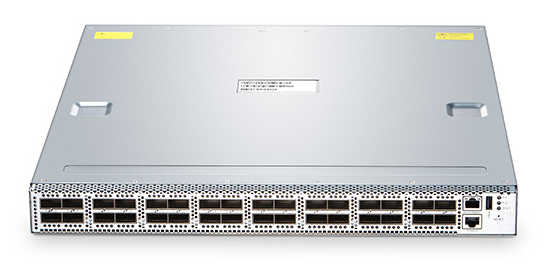White box switch refers to the ability to use “generic”, white box switching and routing hardware in the forwarding plane of a software-defined network (SDN). So that consumer can purchase a generic Ethernet switch without a network operating system (NOS), and install an operating system of their choice. However, white box switch hasn’t been widely accepted and recognized currently. The reasons are as followed: 1. No matter in a data center or enterprise, switch accounts for a very low share in network construction, far below the server, storage, and bandwidth. But it takes up a very important spot in an enterprise, and any problem of it would result in widespread influence. 2. In terms of customer technicians, few people are knowledgeable about network. So when they have problems with network equipment, they are prone to turn to vendor service. While unfortunately, white box switch manufacturers are not professional enough, especially those manufacturers having separated software and hardware, which means white box manufacturers can’t take on projects like branded manufacturers. 3. White box manufacturers have little proficiency. They don’t have complete product lines, and they don’t make core equipment, let alone functionally complex provider equipment (PE).

Generally, there are four major components that make up a network switch, namely silicon, box, network OS and drivers, and applications. White box switching is the idea that the silicon & box can be bought as one thing, and the network OS and applications as other things. This idea is opposite to the traditional norm of network switch acquisition. Through the separation of software and hardware, customers can obtain different support levels for hardware and software. Having a software platform that is independent of hardware also allows support engineers to debug it easily and provide relevant output to the networking team.
Although status quo of white box switch is not so satisfactory, it won’t block and cloud its prospect of development since it still has a lot of advantages overweighing its disadvantages.
To be honest, most vertically integrated switching & routing platforms are loaded with features the most of consumers will never use. Furthermore, many of the features that consumers want to use come at a high price. So they often have to pay extra expenses for these features. However, the overall cost of white box switch is lower than those branded equipment, because it removed some features that consumers rarely used and brand premium as well.
Despite this price advantage, some consumers would regard white box as cheap inferior goods, which turns out a misunderstanding. Because the companies making hardware are professional OEM factories. Their quality of switches is as good as branded switches. Even the brands of hardware are their OEM. That is to say, white box is on par with brand-name systems because they are actually the same hardware. Apart from the quality, white box switch does not involve complicated function, and they only make function sets needed by target consumers. For example, they are less likely to involve MPLS VPN, ISSU Etc. Instead, they focus on relatively simple and controllable data center, especially SDN switch. It simplifies software and makes it understood to most users.
White boxes typically are used as a top-of-rack switch or as part of an SDN deployment. They support industry standards such as OpenFlow. Besides, they are highly programmable and work with orchestration tools such as Ansible, Chef and Puppet. Also, white box switches are characterized by strong telemetry capabilities and openness so that network administrators can get whatever information they need for whatever purpose. In fact, in this area, it’s fair to say white boxes are often superior to traditional layer 2/3 switches.
White box switch puts new ground rules in the market, and lowers the cost of acquisition, while at the same time allows consumers to pick and choose the features and functions they are willing to pay for. As the white box switching and NOS market begin to broaden, I believe what the market will see is a broad variety of applications that consumers can choose to add to their newly flexible networks. White box switch is not merely about choosing a hardware manufacturer or NOS provider. The path white box switch ultimately takes us down to is choice of applications running on those switches. That’s a whole different market. That’s a whole different way to think about networking.
